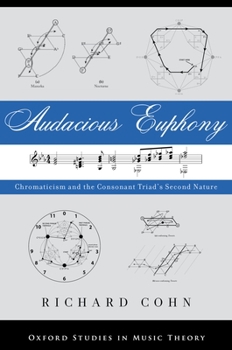Audacious Euphony: Chromatic Harmony and the Triad's Second Nature
Music theorists have long believed that 19th-century triadic progressions idiomatically extend the diatonic syntax of 18th-century classical tonality, and have accordingly unified the two repertories under a single mode of representation. Post-structuralist musicologists have challenged this belief, advancing the view that many romantic triadic progressions exceed the reach of classical syntax and are mobilized as the result of a transgressive, anti-syntactic...
Format:Hardcover
Language:English
ISBN:019977269X
ISBN13:9780199772698
Release Date:January 2012
Publisher:Oxford University Press
Length:256 Pages
Weight:0.70 lbs.
Dimensions:0.9" x 9.3" x 6.4"
Customer Reviews
0 rating





